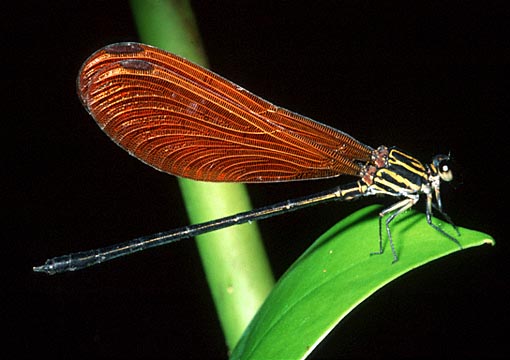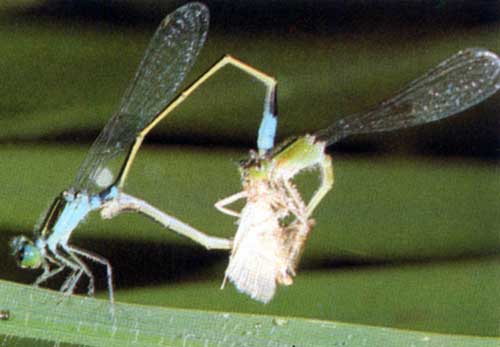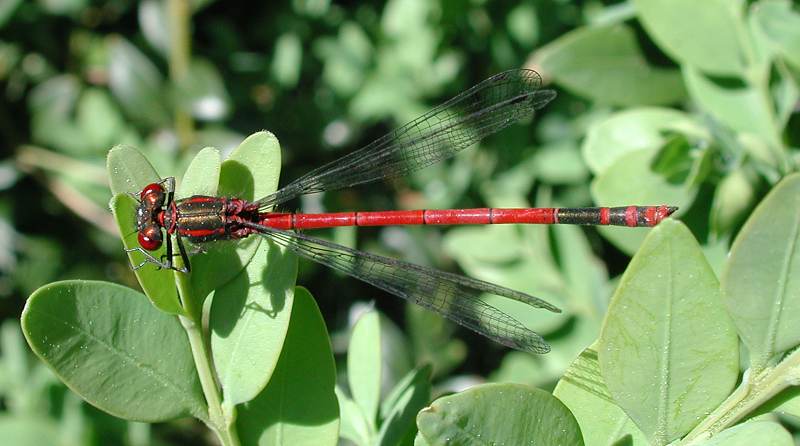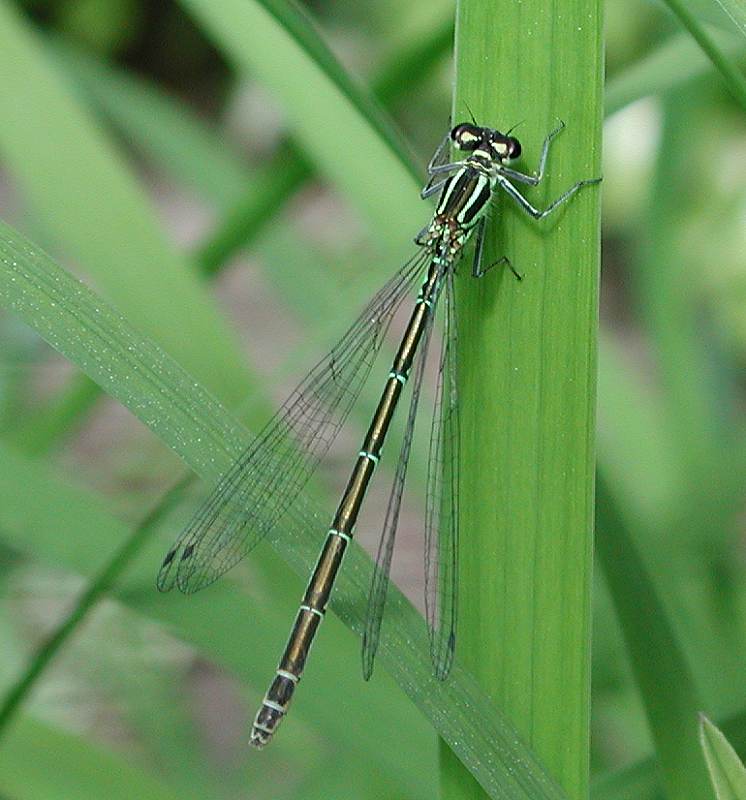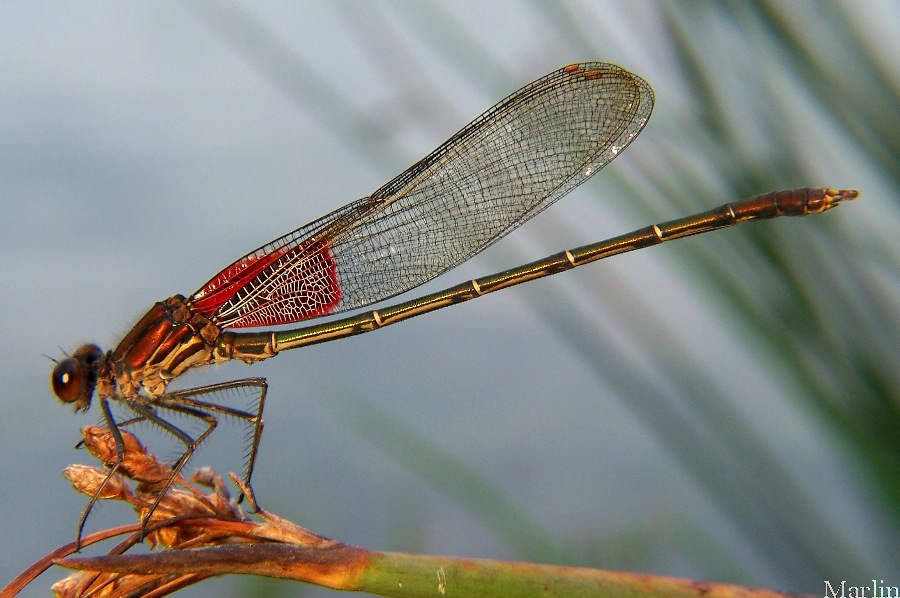|
|
DAMSELFLY |
|
Damselflies are considered beneficial bugs because they eat other, more harmful, bugs. They are among the most ancient bugs that we know about. Fossils that were formed about 325 million years ago have been found in Europe. They are also one of the most beautiful insects that ever roamed Earth, and they have always been completely harmless to humans. They do not sting or bite. Damselflies are related to Dragonflies. They are both beneficial in the same way - they are predators that eat other harmful insects and they keep populations of those other insects from getting too large. Both damselflies and dragonflies can be found flying through fields hunting for their food (their food is other insects). In fact, they eat almost any other kind of insect. Damselfly nymphs (young damselflies) live in the water, but they like to climb up plants looking for other insects to eat. The larvae particularly enjoy eating hopper nymphs that are harmful to rice crops. They are also extremely good at picking aphids off plants. Damselflies hunt in groups whereever they find large numbers of termites together, when they find an ant colony, or near swarms of mayflies and gnats. Damselflies especially love eating flies of all kinds. Damselflies do not mind hunting in colder temperatures. They are one of the few bugs that can be observed hunting during cold weather. Males are territorial - they have an area that they consider to be their own, and they patrol that area looking for prey many for hours at a time. The average size of a Damselfly is 3/4 to 1 3/4 inches long. Of all their characteristics, the easiest way to tell a dragonfly or damselfly from other insects is by the size of the eyes and shape of the abdomen. If the eyes are very large in proportion to the head and the abdomen is long and thin, then it is almost sure to be a Damselfly. Adult Damselflies are brightly colored, very slender creatures. Damselflies have two pair of wings that taper at the base and when at rest, the wings fold back over the body like butterfly wings. Damselflies flutter their wings rapidly when they are patrolling the area of the stream or river looking for prey. They live for a few weeks during the summer and fall, and they fly mainly during the day. Damselflies are found mainly near shallow fresh water such as ponds and small streams. Their nymphs are aquatic - Damselfly eggs are laid in water and that is where the nymphs develop. Dameslflies can be found all over North America and in Europe.
|
